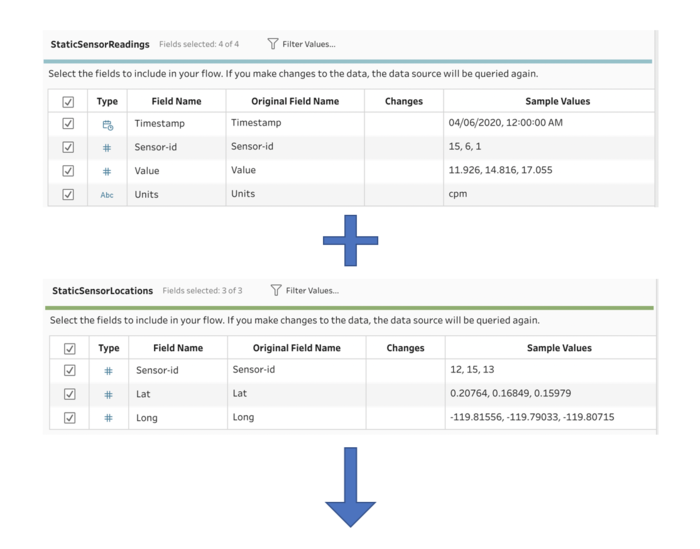IS428 AY2019-20T1 Assign Foo Yong Long Data Transformation
|
|
|
|
|
|
|
MC2 contains data of the Mobile and Static Sensors which display radiation levels in Counts Per Minute(CPM) that supports the entire length of the simulation(6th April 2020,0000Hrs - 10th April 2020,2359Hrs). The data cleaning process is as follow:
Data Preparation
To ensure a thorough analysis of the data, the values and locations of both Mobile and Static sensor categories have to be analyzed together. I have created two excel files labeled "HospitalLocations.csv" and "AlwaysSafe.csv" as shown below. This data will be utilized for distance calculation and to create a more interactive dashboard for the end-user.
Longitude and Latitude of Hospital Locations
Longitude and Latitude of Always Safe Plant
The data preparation was entirely done in Tableau Prep Builder. The final flow is as follow
[File:MC2FINALFLOW.png|900px|center]]
| Step | Description |
|---|---|
|
1 |
The static sensor data consist of two files. One of the files contains the longtitudes and latitudes of the Sensors while the other file contains the identification of the sensors. |
|
2 |
To ensure that the static and mobile sensor data can be combined, the coordinates of the static sensors have to be present. A full outer join between the static sensor readings and static sensor locations was done. |
|
3 |
Sensor-ids repeat between the mobile and static sensors. To differentiate them, make a new calculated field that labels all static sensor data as "Static". The New Sensor-id contains the prefix "S" to signify that this is a static sensor. The "Units" field is not required as the measurements(cpm) are standard between the static and mobile data. |
|
4 |
Now that the data has the same format and columns, we can union the static and mobile sensor data. |
|
5 |
The final data file is as above. The data is output as an extract to optimise performance when imported into Tableau. |
Importing data into Tableau
| Step | Description |
|---|---|
|
1 |
In order to be able to aggregate data by neighbourhood, we will have to make use of the shape file provided. To join the data with the polygons from the shape file, we can use a formula to assign the coordinates of the sensor to a specific polygon(neighbourhood). |




